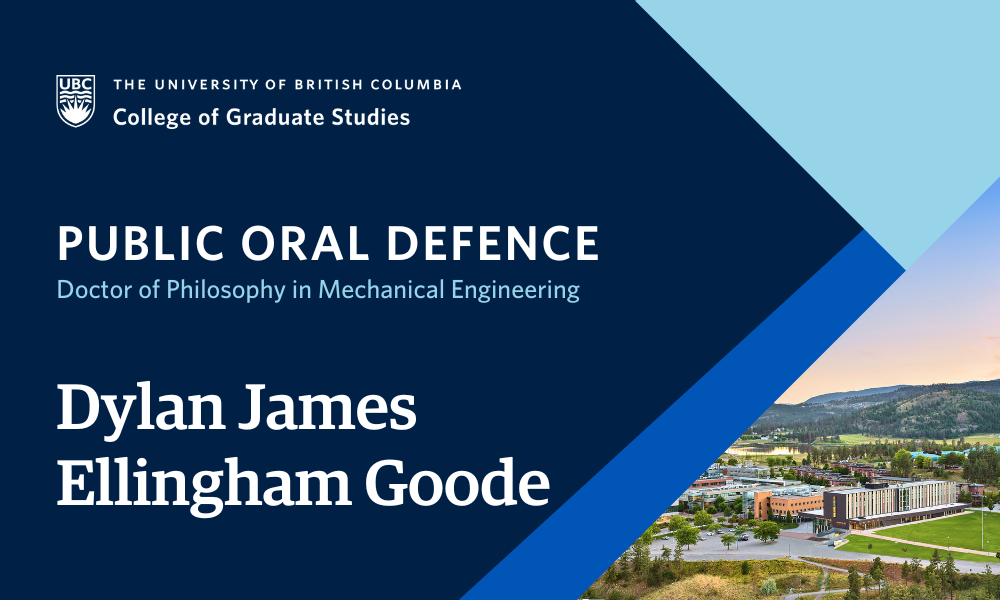
- This event has passed.
Dissertation Defence: Developing, Testing, and Fabricating a Novel Bileaflet Mechanical Heart Valve: The iValve
July 31, 2024 at 9:00 am - 1:00 pm

Dylan James Ellingham Goode, supervised by Dr. Hadi Mohammadi, will defend their dissertation titled “Developing, Testing, and Fabricating a Novel Bileaflet Mechanical Heart Valve: The iValve” in partial fulfillment of the requirements for the degree of Doctor of Philosophy in Mechanical Engineering.
An abstract for Dylan James Ellingham Goode’s dissertation is included below.
Examinations are open to all members of the campus community as well as the general public. Please email hadi.mohammadi@ubc.ca to receive the Zoom link for this defence.
ABSTRACT
Valvular heart disease encompasses conditions affecting heart valves, particularly the aortic and mitral valves due to higher left-sided heart pressures. Complications like leaflet calcification (stenosis) hinder proper valve function, leading to congestive heart failure and necessitating valve replacement. Currently, three forms of heart valve replacement are available: bioprosthetic valves using bovine or porcine tissue, transcatheter valves combining bioprosthetic valves with collapsible stents, and mechanical heart valves (MHVs) utilizing rigid synthetic materials for unidirectional blood flow.
Among MHVs, the bileaflet mechanical heart valve (BMHV) is modern and durable, lasting a patient’s lifespan, unlike bioprosthetic valves. However, BMHVs require lifelong anticoagulation therapy to prevent thrombosis formation. Thrombogenicity in BMHVs arises during the closing phase, converting regurgitant flow into jets as the orifice decreases, and during hinge washing in the closed phase to remove stagnant blood elements, leading to high shear stress and potential thrombosis.
This research focuses on designing, fabricating, and testing a novel BMHV with improved hemodynamic performance akin to the native valve, aiming to eliminate the need for anticoagulation therapy while maintaining durability. The design incorporates rounded leaflets providing a single central orifice, a saddle-shaped housing conforming to the native annulus, and an open hinge design for washing during the forward flow phase.
Prototypes underwent kinematic, kinetic, and finite element validation, showcasing a uniform stress-dispersing hinge design that minimizes stress concentrations. Experimental data demonstrated hinge washing during low-stress forward flow phases and optimal central flow with a single large orifice. Kinetic results showed native-like performance during opening and closing phases, supporting the case for negating anticoagulation therapy.
The novel BMHV’s promising performance warrants further evaluation with industry-standard materials for animal trials. This research contributes to advancing cardiovascular care by potentially reducing the risks associated with anticoagulation therapy in valve replacement procedures, offering improved patient outcomes, and enhancing the quality of life for individuals with valvular heart disease.